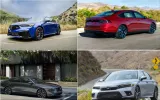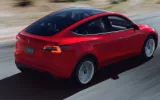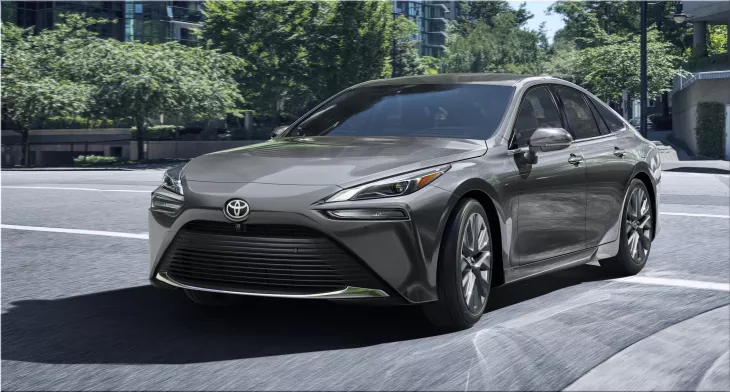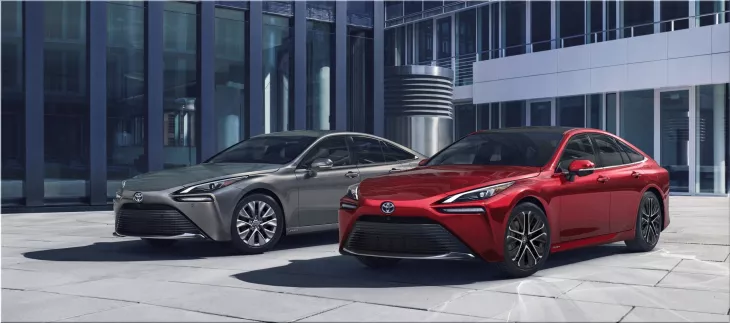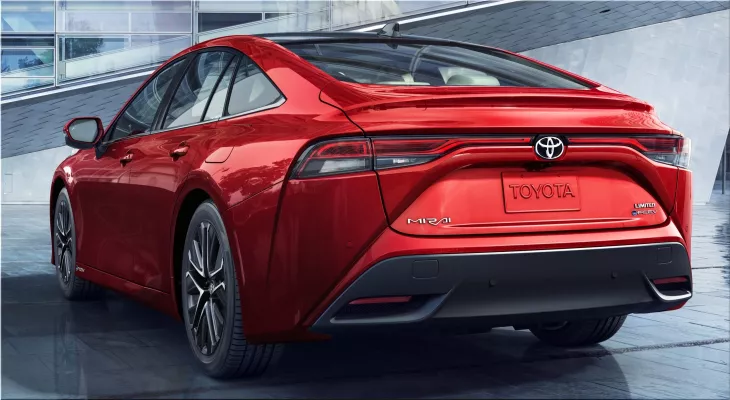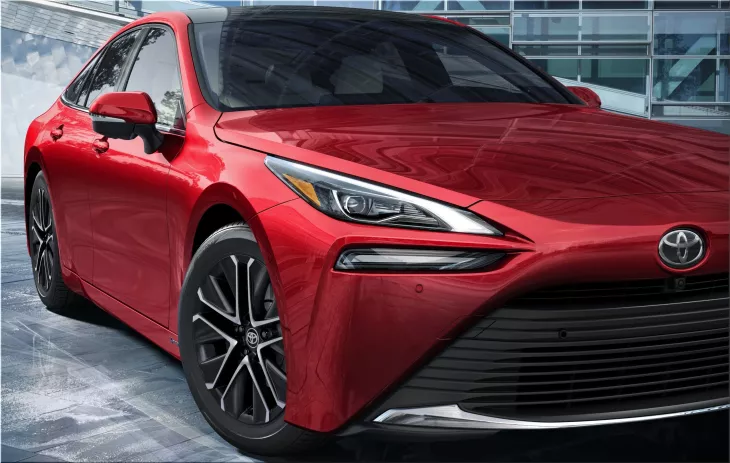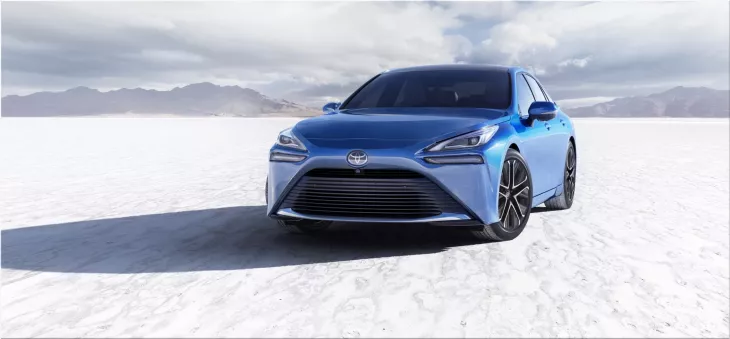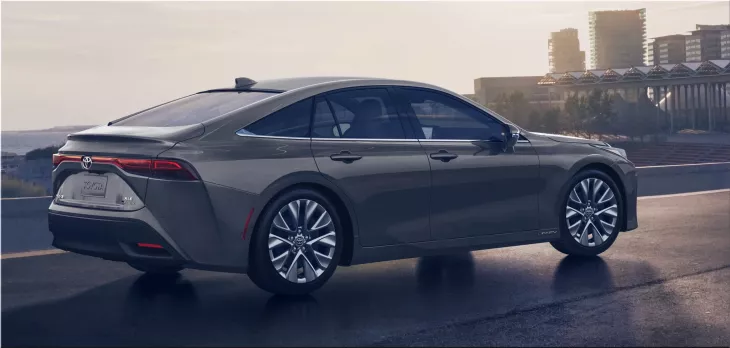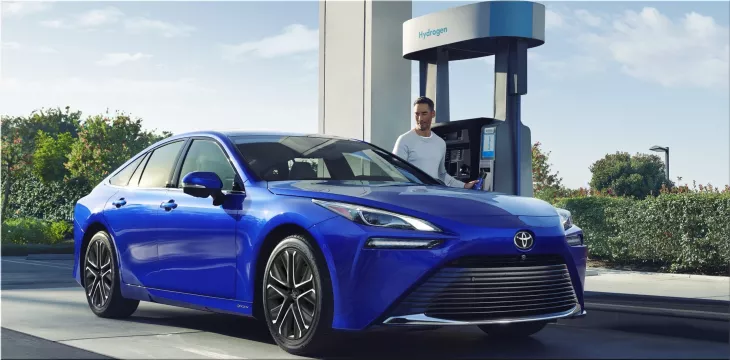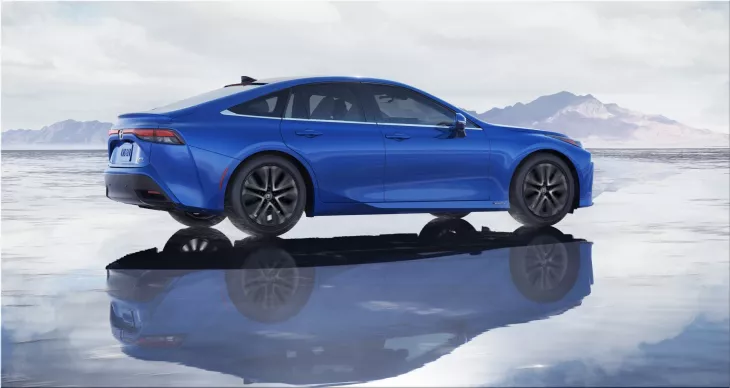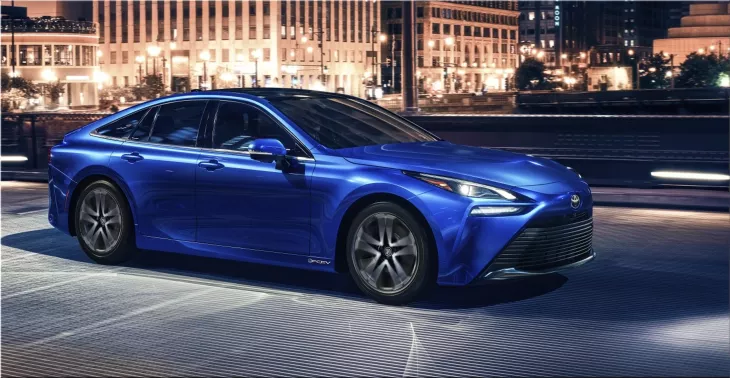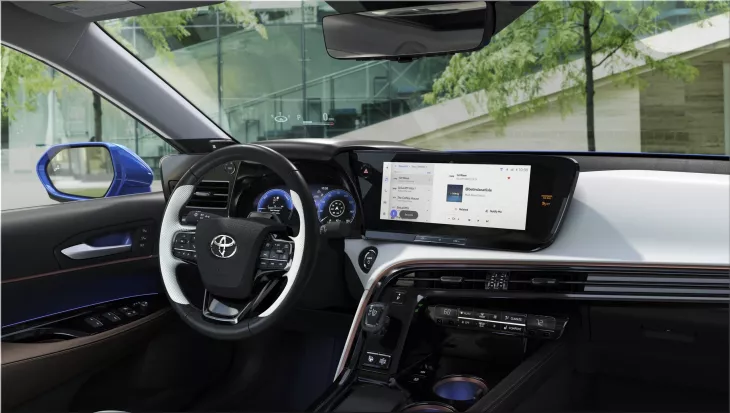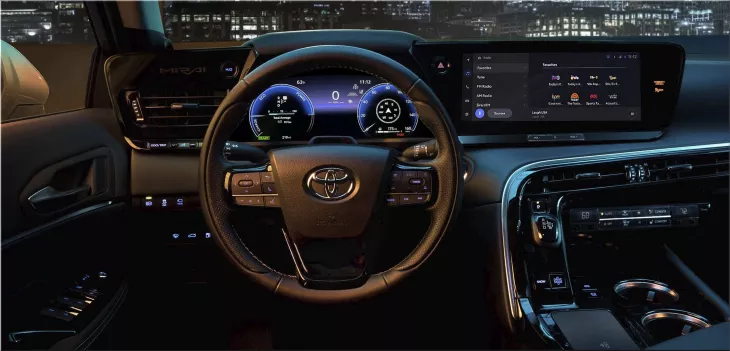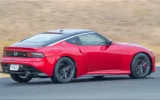The Toyota Mirai is not your typical electric car. It does not have a battery pack or a plug. Instead, it runs on hydrogen, a clean and abundant fuel that can be produced from renewable sources. The Mirai is one of the few hydrogen fuel cell vehicles (FCVs) available in the market, and it has just received a major upgrade for 2024.
The new Mirai, which means “future” in Japanese, is a sleek and stylish sedan that offers an electrifying ride. It has a more powerful and efficient fuel cell system, a larger hydrogen tank, and a longer range than the previous model. It also has a lower price tag, making it more accessible to eco-conscious drivers.
How does the Mirai work?
The Toyota Mirai works by combining hydrogen and oxygen in a fuel cell stack, which generates electricity to power the electric motor. The only byproduct of this process is water, which exits the tailpipe as vapor. Unlike conventional gasoline or diesel cars, the Mirai does not emit harmful pollutants or greenhouse gases.
The Mirai has two hydrogen tanks, one under the rear seat and one behind the rear axle. They can store up to 5.6 kg of hydrogen, enough to travel up to 400 miles on a single fill-up. Refueling the Mirai takes about five minutes at a hydrogen station, similar to filling up a gas tank.
The Mirai also has a small lithium-ion battery that acts as a buffer, storing excess electricity from the fuel cell and providing extra power when needed. The battery can also be recharged by regenerative braking, which captures the car's kinetic energy when it slows down.
What are the benefits of the Mirai?
The Toyota Mirai offers several benefits over conventional cars and battery electric vehicles (BEVs). Some of them are:
- Zero emissions: The Mirai does not produce any harmful emissions, only water. This helps reduce air pollution and greenhouse gas emissions, which contribute to climate change and health problems.
- Long range: The Mirai can travel up to 400 miles on a full tank of hydrogen, which is comparable to or better than most gas or diesel cars. This eliminates the range anxiety that some drivers may have with BEVs, which typically have a shorter range and require longer charging times.
- Fast refueling: The Mirai can be refueled in about five minutes at a hydrogen station, which is similar to filling up a gas tank. This is much faster than charging a BEV, which can take hours depending on the battery size and the charger type.
- Smooth and quiet performance: The Mirai delivers a smooth and quiet ride, thanks to the electric motor and the fuel cell system. The Mirai has a low center of gravity and a rigid body structure, which enhance its handling and stability. The Mirai also has a sport mode, which boosts its acceleration and responsiveness.
What are the challenges of the Mirai?
The Mirai also faces some challenges that may limit its adoption and appeal. Some of them are:
- High cost: The Mirai is still an expensive car, even with the lower price for the 2024 model. The Mirai starts at $49,500, which is about $9,000 less than the previous model but still more than twice the average price of a new car in the US. The Mirai also qualifies for a federal tax credit of up to $8,000 and some state incentives, which can lower the cost further, but it may not be enough to attract mass-market buyers.
- Limited availability: The Mirai is only available in select markets, mainly in California and Hawaii, where there are some hydrogen stations. The Mirai is not sold in other states or countries, where there is little or no hydrogen infrastructure. The Mirai also has a limited production capacity, as Toyota only plans to make 30,000 units per year globally.
- Safety concerns: The Mirai uses high-pressure hydrogen tanks, which may raise some safety concerns among potential buyers. Hydrogen is a flammable gas that can explode if exposed to heat or sparks. However, Toyota claims that the Mirai is designed to be safe and reliable, and that the hydrogen tanks are built to withstand severe impacts and leaks. Toyota also says that the Mirai has passed rigorous safety tests and meets all federal and state regulations.
What is the future of the Mirai?
The 2024 Toyota Mirai is a visionary car that showcases Toyota’s commitment to innovation and sustainability. The Mirai is part of Toyota’s goal to achieve carbon neutrality by 2050 by reducing the emissions of its vehicles and operations. Toyota also aims to popularize FCVs and hydrogen as a viable alternative to fossil fuels by collaborating with other automakers, governments, and stakeholders.
The Mirai is not the only FCV in the market, but it is one of the most advanced and attractive ones. The Toyota Mirai competes with other FCVs, such as the Honda Clarity, the Hyundai Nexo, and the upcoming Mercedes-Benz GLC F-CELL. The Mirai also competes with BEVs, such as the Tesla Model 3, the Chevrolet Bolt, and the Nissan Leaf, which have their own advantages and disadvantages.
The Mirai may not be the car for everyone, but it is a car for the future. The Toyota Mirai is a hydrogen-powered car that can go 400 miles on a tank, offering an electrifying ride with zero emissions. The Mirai is advanced to the core and ready to make a splash in the automotive world.

